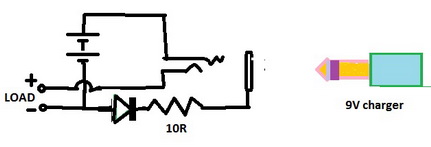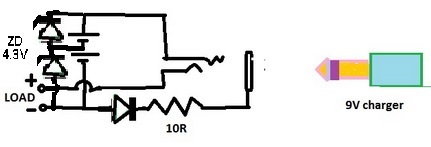jarce2000
Newbie level 2

Two 3.7 V Li-ion batteries working in series supply power to a device that works at 7.4 V, but the batteries must be charged at 3.7 V. When an external charger is plugged in, the charging circuit is automatically activated to charge the batteries and the device stops working, when the charger is unplugged the device starts working by the power supplied by the batteries. Microcontrollers are not allowed.
I drew an outline of the circuit (see the attachment), but it needs to replace the switches by something that works automatically.
The device's circuit is in black, and the charging circuit is in red.
When the device is working the black switches are closed and the red switches are open.
When the batteries are charging, it happens the opposite: the black switches are open and the red switches are closed.
Regards
I drew an outline of the circuit (see the attachment), but it needs to replace the switches by something that works automatically.
The device's circuit is in black, and the charging circuit is in red.
When the device is working the black switches are closed and the red switches are open.
When the batteries are charging, it happens the opposite: the black switches are open and the red switches are closed.
Regards






